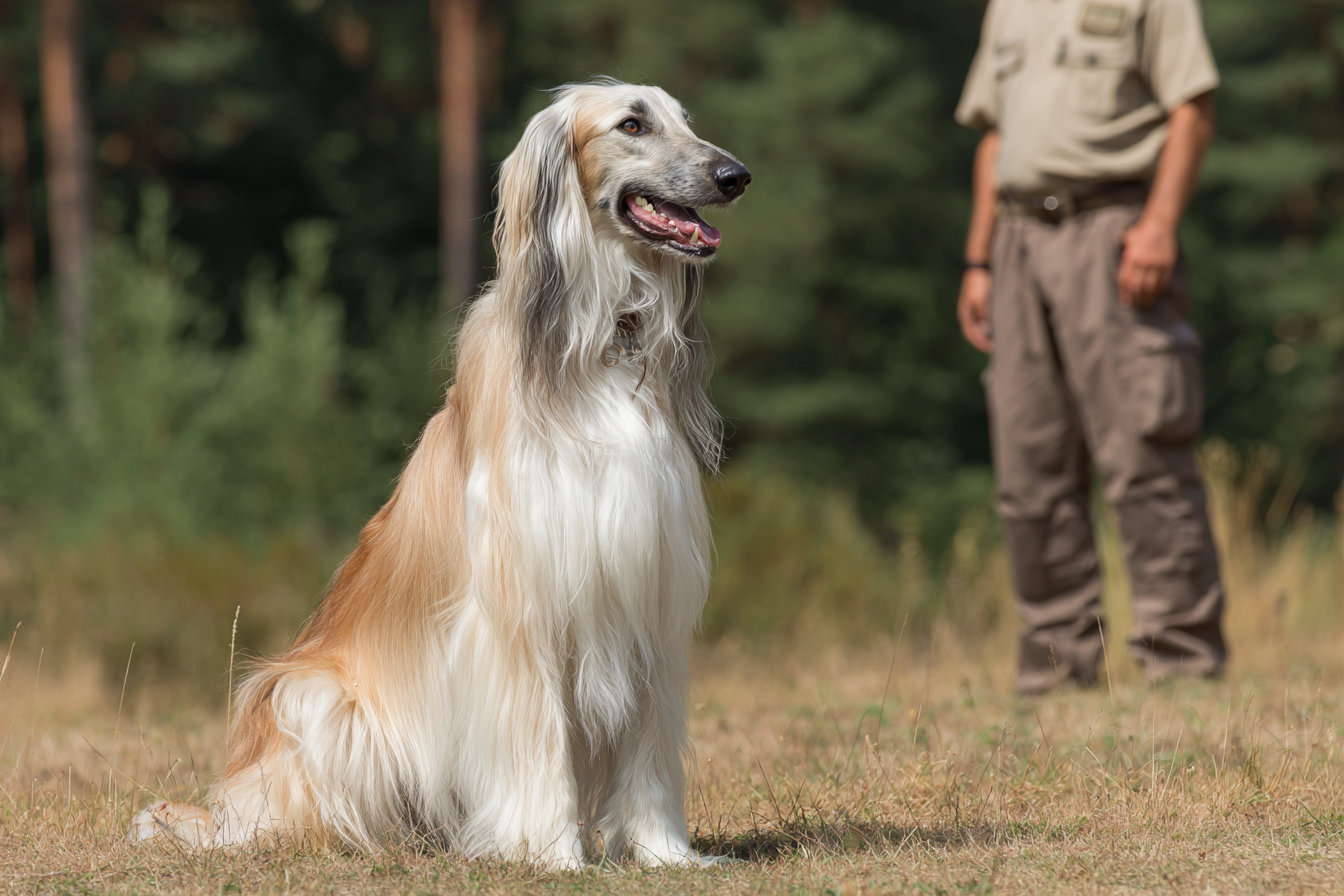Training a Saluki can be a rewarding experience when you understand their unique personality traits and adapt your methods accordingly. Known for their grace, speed, and independent spirit, Salukis require training approaches that emphasize patience, consistency, and positive reinforcement. This guide offers practical and effective training methods tailored to help you build a strong bond with your Saluki while encouraging good behavior and responsiveness.
Understanding the Saluki Temperament
Before diving into training techniques, it’s essential to grasp the nature of the Saluki breed. Salukis are one of the oldest dog breeds, originally bred for hunting and stamina. They possess an elegant appearance combined with a dignified demeanor. Their temperament is often described as gentle, reserved, and independent. Unlike some highly eager-to-please breeds, Salukis tend to have a strong will and a streak of aloofness, which can make training a bit more challenging if approached with traditional methods.
Because they have been bred for hunting in open deserts, Salukis are naturally alert, quick, and sometimes stubborn. They respond best to training that respects their intelligence and independence rather than harsh correction or repetitive drills. Keeping training sessions short, engaging, and varied helps maintain their interest and enthusiasm. Understanding this temperament is the foundation for successful training.
Basic Obedience Training
Starting with basic obedience is crucial to establish control and communication between you and your Saluki. Key commands to focus on include “sit,” “stay,” “come,” “down,” and “heel.” Given their independent nature, Salukis might test boundaries, so a firm but gentle approach is needed.
Consistency is essential during this phase. Make sure everyone in the household uses the same commands and expectations to avoid confusion. Frequent short sessions, ideally 5 to 10 minutes each, work best to keep your Saluki attentive without causing boredom or frustration. Also, incorporating play and rewards right after command completion strengthens positive associations with training.
Positive Reinforcement Strategies
Saluki training thrives on positive reinforcement because they respond well to encouragement and rewards rather than punishment. This strategy involves rewarding desired behaviors with treats, praise, petting, or playtime, which encourages your dog to repeat those behaviors.
Using high-value treats that your Saluki finds irresistible can motivate them effectively. Pair treats with enthusiastic verbal praise like “good dog” or “well done” to reinforce positive communication. Avoid harsh reprimands or physical corrections, as these can damage trust and impede learning. Instead, redirect unwanted behaviors and reward the alternatives you prefer.
Clicker training can also be an excellent tool in positive reinforcement. By using a distinct clicking sound to mark the perfect behavior followed immediately by a reward, you help your Saluki quickly understand what action earned their praise and treat.
Dealing with Common Behavioral Issues
Like any breed, Salukis can exhibit behavioral challenges, some linked to their independent temperament or high prey drive. Common issues include:
- Recall difficulties: Because Salukis love to explore, they sometimes ignore the recall command, especially when distracted by scents or movement.
- Chasing tendencies: Their natural hunting instincts can lead to chasing small animals, bikes, or cars.
- Separation anxiety: While generally reserved, some Salukis become anxious if left alone for long periods.
- Jumping or pulling on the leash: Excitement can cause unwanted physical behaviors during walks.
Tackling these issues involves patience and consistent management. For recall, practice in low-distraction environments with strong rewards before gradually increasing difficulty. Using a long leash during outdoor training can offer safer freedom while reinforcing commands. Teaching alternative behaviors like “leave it” or “settle” can reduce chasing and impulsive actions.
For separation anxiety, build independence gradually by leaving the dog alone for increasing periods paired with comforting toys or treat puzzles. For leash training, use positive reinforcement to reward calm walking and consider no-pull harnesses to discourage lunging without causing discomfort.
Socialization and Exposure
Early socialization is vital for Salukis to grow into confident and well-rounded dogs. Introducing your Saluki to different people, animals, environments, sounds, and situations while they are young helps prevent fearfulness or aggression later on.
Use positive, controlled experiences during these introductions. Group puppy classes, supervised dog parks, and gentle interactions with strangers can help build your Saluki’s social skills. Because they can be shy or reserved, never force interactions; let them approach new experiences at their own pace while offering treats and praise.
Ongoing socialization for adult Salukis is also beneficial to keep them adaptable and reduce stress in unfamiliar situations. Exposure to new sights, sounds, and gentle handling by different people promotes comfort and ease.
Advanced Training Ideas
Once your Saluki masters basic obedience, you can explore advanced training to stimulate their minds and strengthen your bond. Salukis excel in activities that engage their natural instincts and intelligence, including:
- Lure coursing: A sport that mimics hunting, encouraging your Saluki to chase a mechanically operated lure across open fields. It’s a fun way to satisfy their prey drive safely.
- Agility training: Teaching your dog to navigate obstacle courses can enhance coordination, build confidence, and provide physical exercise.
- Trick training: Teaching fun tricks like “spin,” “bow,” or “weave” keeps training engaging and sharpens your dog’s responsiveness.
- Recall challenges: Increasing complexity in recall training with distractions improves reliability and safety during off-leash outings.
Advanced training should continue to focus on positive reinforcement, keeping sessions upbeat and rewarding. These activities prevent boredom, promote mental stimulation, and deepen your relationship with your Saluki.
Training Tools and Equipment
Choosing the right tools can make training your Saluki more effective and safer. Some recommended equipment includes:
- Clicker: For precise positive reinforcement marking.
- High-value treats: Small, easily consumable treats that motivate your dog.
- Leashes and harnesses: A standard leash for basic walks and a long line leash for recall training or controlled off-leash practice. No-pull harnesses work well to reduce pulling and maintain comfort.
- Training collars: Basic flat collars or martingale collars are preferable to harsh choke or prong collars, which can harm sensitive Salukis.
- Toys: Interactive toys, puzzle feeders, and safe chew toys to provide mental stimulation at home.
Always select equipment that prioritizes your Saluki’s comfort and safety to maintain a positive training experience.
Final Tips for Training Your Saluki
Training a Saluki demands patience, consistency, and an appreciation of their unique personality. Here are some key takeaways to keep in mind:
- Keep training sessions short, varied, and positive to match their attention span and curiosity.
- Use rewards and praise generously to motivate and build trust.
- Be patient with challenges like recall or distractions—gradual progress is normal.
- Socialize your Saluki from an early age to help them become confident and well-adjusted.
- Engage them with stimulating activities that tap into their natural abilities.
- Choose training tools that ensure comfort without causing stress or discomfort.
By understanding and respecting your Saluki’s temperament while applying these effective training methods, you can raise a responsive, happy, and well-mannered companion who thrives as part of your family.







